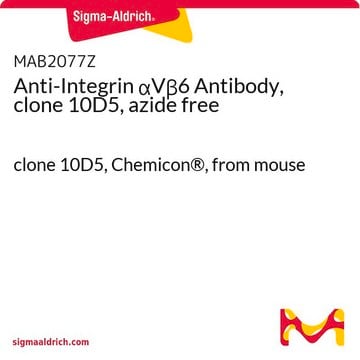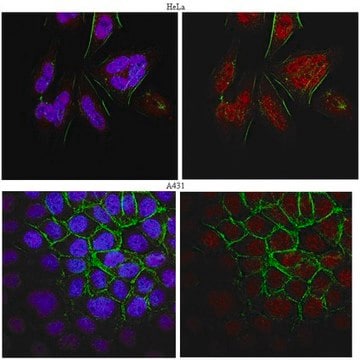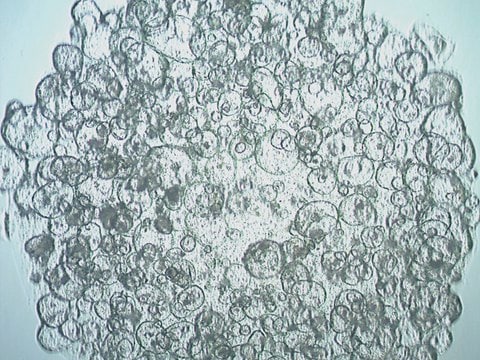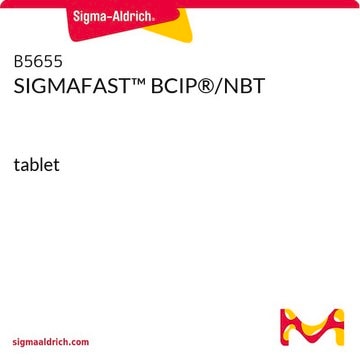AB1922
Anti-Integrin β4 Antibody
serum, Chemicon®
Synonym(e):
CD104
Größe auswählen
Größe auswählen
About This Item
Empfohlene Produkte
Biologische Quelle
rabbit
Qualitätsniveau
Antikörperform
serum
Antikörper-Produkttyp
primary antibodies
Klon
polyclonal
Speziesreaktivität
human, mouse, rat
Hersteller/Markenname
Chemicon®
Methode(n)
immunohistochemistry: suitable
immunoprecipitation (IP): suitable
NCBI-Hinterlegungsnummer
UniProt-Hinterlegungsnummer
Versandbedingung
wet ice
Posttranslationale Modifikation Target
unmodified
Angaben zum Gen
human ... ITGB4(3691)
mouse ... Itgb4(192897)
rat ... Itgb4(25724)
Spezifität
Immunogen
Anwendung
Immunohistochemistry: 5 μg/mL. See protocol below.
Optimal working dilutions must be determined by the end user.
Suggested Protocol for Immunohistochemical:
1. Fix cryostat sections with a 1:1 chloroform-acetone mixture for 10 minutes at room temperature.
2. Air Dry.
3. Wash with 2 mL of 1x PBS.
4. Add 200 μL of first antibody (5 μg/mL) to each slide. Incubate for 1 hour at room temperature in a humidity chamber.
5. Wash with 5 mL of 1x PBS.
6. Add appropriately diluted anti-rabbit secondary antibody conjugate and incubate for 1 hour in a humidity chamber
7. Wash with 5 mL of 1x PBS.
8. Add 200 μL of development solution (containing DAB or other substrate depending on the secondary antibody) and incubate at room temperature for the necessary time to develop the dark color. Follow the reaction with a microscope, to establish the correct color intensity.
9. Block the reaction by washing with 2 mL of 1x PBS.
10. Counterstain with hematoxylin as desired.
Rechtliche Hinweise
Sie haben nicht das passende Produkt gefunden?
Probieren Sie unser Produkt-Auswahlhilfe. aus.
Lagerklassenschlüssel
10 - Combustible liquids
WGK
WGK 1
Analysenzertifikate (COA)
Suchen Sie nach Analysenzertifikate (COA), indem Sie die Lot-/Chargennummer des Produkts eingeben. Lot- und Chargennummern sind auf dem Produktetikett hinter den Wörtern ‘Lot’ oder ‘Batch’ (Lot oder Charge) zu finden.
Besitzen Sie dieses Produkt bereits?
In der Dokumentenbibliothek finden Sie die Dokumentation zu den Produkten, die Sie kürzlich erworben haben.
Aktive Filter
Unser Team von Wissenschaftlern verfügt über Erfahrung in allen Forschungsbereichen einschließlich Life Science, Materialwissenschaften, chemischer Synthese, Chromatographie, Analytik und vielen mehr..
Setzen Sie sich mit dem technischen Dienst in Verbindung.








